As a fashion photographer, I can say that the model is the key to good people photography. Aside from an elaborate concept, a professional team, an interesting location, fine light setting, good equipment and finally your editing skills, it’s the model’s looks and attitude that define the quality of your shooting results.
 So it might be important to keep her or him happy and motivated during the whole production, otherwise there’s the risk that something certain will be missing in the pictures.
So it might be important to keep her or him happy and motivated during the whole production, otherwise there’s the risk that something certain will be missing in the pictures.
In my opinion, the X factor lies in the model’s eyes and if she or he’s a professional, very experienced, or just very charismatic, she/he will try to give you that sparkle. Nevertheless, models are human beings, so it’s up to the photographer (and the team of course) to make sure she/he feels like giving her/his best. The good news is: besides some basic preparations and your good manners, you can make use of some little tricks to get the best from the person in front of your lens. And obviously I’m not talking about yelling phrases like „yeah, baby!“ at her (or him), except you are saying it in a funny and ironic way (because then it’s quite a good way of making her/him laugh and relax). I do that sometimes and it’s especially funny, because I’m a female photographer. The following tips and tricks are based on my own experiences and the way it usually works for my shootings. I hope that some of my advice will help you and your future models chime together and bring up even better results.
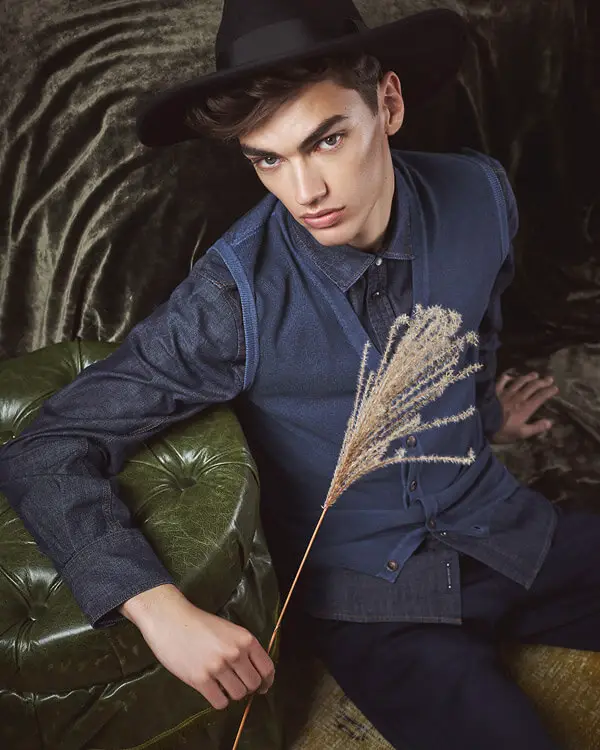 By Heidi Rondak
By Heidi Rondak
Tips To Make Your Model Feel Comfortable
Before we get to the secret tricks, I’d like to give some general advice. To start even before the shooting, I’d say that it’s essential to chose your model carefully. You should screen her or his portfolio and decide, whether you can see a certain presence in her/his eyes telling you a story, or if she/he seems to be distant. If there aren’t many photos, because she or he’s new to the business or not a professional model, that doesn’t mean that you should keep your hands off the idea of shooting with that particular model. But it could be helpful to meet her/him at a GoSee first, so you can observe her/his way of moving and the aura and maybe even do some test shots.
When the model is chosen and the shooting preparations are in progress, you should ensure some comforts, especially if your shooting is going to last for more than 4 hours. I think it’s necessary, not only for the model, but for the whole team, to provide some food and drinks, because otherwise the motivation will certainly decrease at a certain point. It’s only natural that someone who’s exhausted and hungry won’t be able to give 100 percent after a while – and models are no exception. Please forget about all the rumours that models don’t eat, because they really do.
In spite of the fact that in the fashion industry collections are getting photographed anti-cyclic to the actual season (autumn/winter productions are in summer and spring/summer in the winter) your model will surely thank you for choosing an indoor location that additionally has a functioning heating, when it’s freezing outside, because she would be the one wearing a light dress only (or he some short pants) while you can still wrap yourself up warmly. I mostly consider winter time as the season for studio shootings and summer time for going out on beautiful locations. As for the indoor locations, accessible WIFI and some pleasant music are helping a lot to keep the whole team happy, by the way.
If the shooting takes place outdoors, you as the photographer should be aware that some people are in discomfort when there is no bathroom available. You can check an urban shooting area before the production day, and see if there are e.g. cafés or restaurants accepting non-costumers to use their bathrooms. If your shooting is in the open countryside, providing tissues and sanitizer, especially for the women, would be appropriate.
Also important, when shooting outside and the sun is shining: please make sure that the make-up artist uses sun protection on the model. If there’s no possibility of hiding in the shadow in between times, you can bring umbrellas to avoid sunstrokes. You might feel that what I’m suggesting is over-protective, but keep in mind, that the model won’t work with you again, if she or he gets hurt in any way or felt too uncomfortable during the shooting. If she/he’s an agency model, you might never get further models from there again.
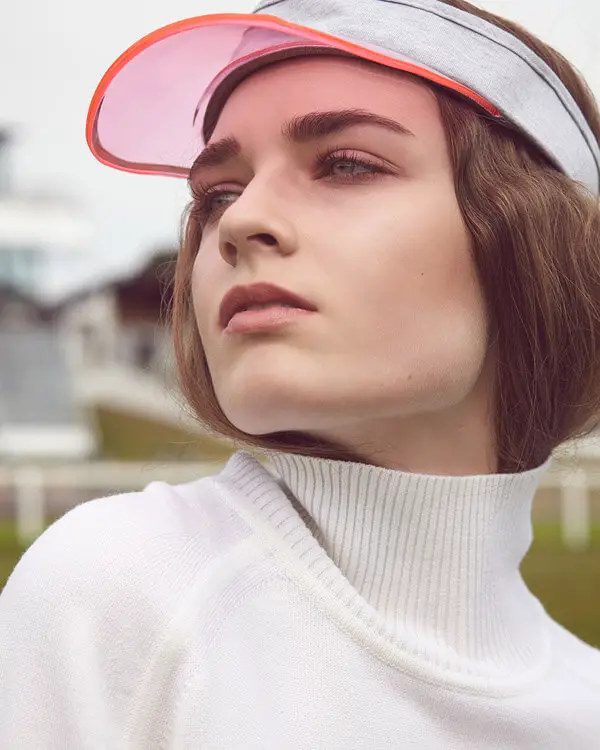 By Heidi Rondak
By Heidi Rondak
When the shooting day arrives and the model enters the set, she/he should always be treated respectfully. Welcoming her/him warmly, a little smile and some small talk questions should be a good start, so she/he doesn’t feel ignored. If you’re busy rigging up the light or doing something else, it might yet be better to pause for a minute and remember that the connection between you both is essential for the story you want to shoot later on. Introducing her/him to everyone and showing her/him where to find food and drinks, or the bathroom, and then bringing her to the make-up area will surely make her/him feel quite comfortable and it doesn’t take too much time.
When the model is ready made up, hair styled and dressed, it’s up to you to be the director, especially before the first scene. I think that the best three things to do before you start, is to firstly explain to the model what you are going to create during the whole shooting. She/he should get a clear idea of what her/his role is, which kind of emotions she/he’s expected to show, if she/he’s supposed to interact with e.g. the setting or other models and on what you want to focus with the pictures. E.g. when you are shooting a story about handbags, the model should get proper instructions on how to present the bags, and so on.
Secondly, I’m sure you will agree that a picture paints a thousand words, which means that showing some sample pictures or moods that you’ve prepared, will help her/him understanding your intent and inspire her/him to do good poses.
Thirdly, when you have a certain style of staging models and you want to keep it up, it’s the easiest way to just tell her/him about your preferences. For example, when the background is very neutral, like in a studio, I tell the models to use their arms a lot, so they look edgy and fill more space in the picture. I tell them to do so in order to avoid too commercial- or standard-looking poses and that’s essential for my photographic style.
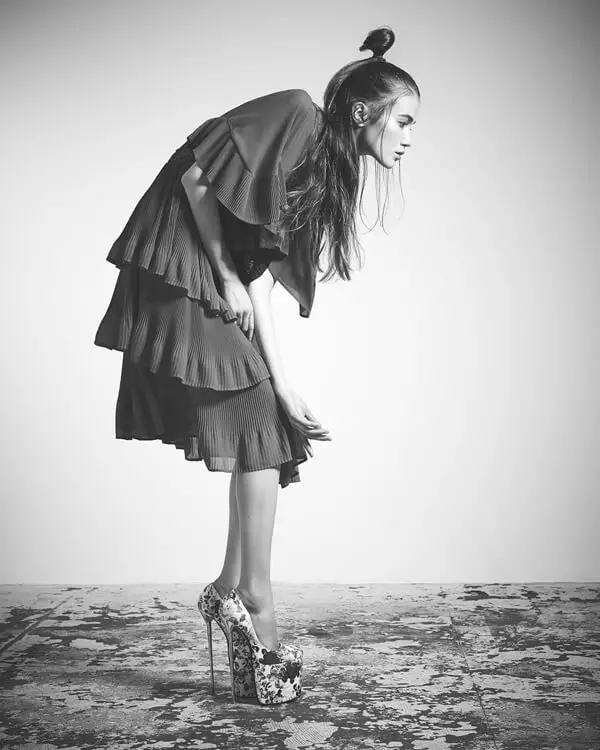 By Heidi Rondak
By Heidi Rondak
Once you’ve explained your expectations towards the model at large, I think it’s important to maintain the connection. It can’t be a too big effort to announce the start and end of a session, instead of taking her/him by surprise or walking away without saying thank you. Remember, she/he’s a human being, not a lifeless object in front of your lens, even if you’re in a flow. Talk to the model or at least give her/him a charming smile now and then to signalize that she/he’s doing a good job.
It might occur that you’re not satisfied with the pictures, but even if the problem lies in your own performance, it’s better to stay calm and never make a disappointed face, unless you are willing to make your model insecure. In fact you shouldn’t show off any negative feelings, because people are empathetic and they will mirror you – which again affects your photos.
My personal advice is to better psych your models up than upset them. Give her or him some feedback on what she/he’s doing. A simple „yes“ from time to time, or when you see a certain pose that you like, can already work miracles. Other than your negative feelings, you should show the positive ones right away. If you feel that she/he’s doing really amazing, just say it. That way your model will be encouraged and keep up the level.
If you don’t like the model’s poses at all or a particular thing she/he’s doing frequently, make a brief stop to talk about the details and first tell her or him what you really like, and then what she/he should do differently. Try to say it in a non-judgemental way to not cause any embarrassment. Especially for the first scene of your shooting, it’s okay, if it doesn’t work perfectly from the very start. A model can neither read your mind, nor see her-/himself posing, but you can always work on a solution together, and once you’ve found the right attitude, she/he will know how to pose for the rest of the day.
Before we proceed to the tricks on set, here’s another last general tip for all people photographers. A thing that I recommend against is staring at the model too long without taking pictures. Of course, I know that normally you don’t mean to look at her or him in an inappropriate way. But if you want to check the light for example, I think it’s better to take a picture and look on the image afterwards, because being stared at can feel very odd to the model. I know by experience, that some photographers take their time staring between each and every picture but in my opinion it’s better to train yourself to make faster decisions and avoid such a thing. If you are able to decide faster, you will also automatically improve the first 50–100 pictures you take per look and feel confident about them. There will be no need for taking around 500 photos anymore, just to be sure, and I can guarantee that shorter sessions will be more pleasant for the model and the whole team.
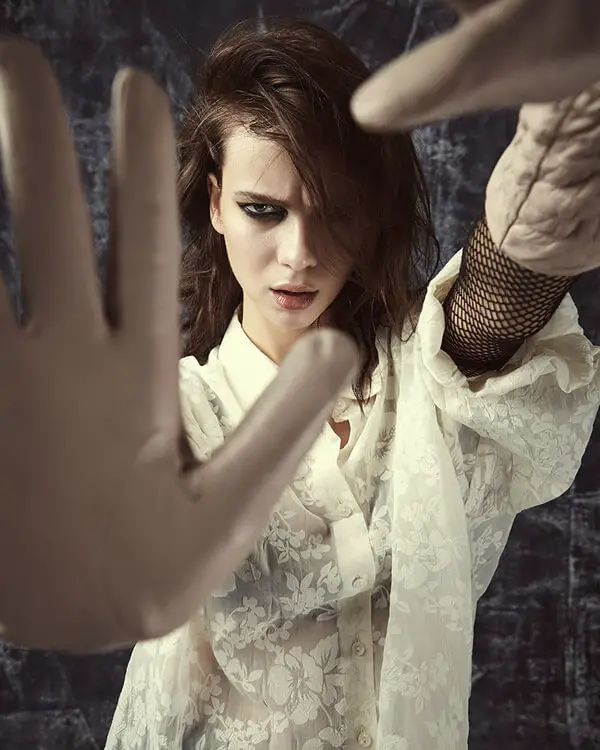 By Heidi Rondak
By Heidi Rondak
Tricks To Get The Best Of Your Model
In order to keep up the flow on set, my first trick is to not stop the model every time when she/he’s doing something that doesn’t look great. Just snap those occasional inconvenient moments too, so she/he can move on to the next pose. No one will force you to choose those pictures when there are other good ones too. I only interrupt a model, if she or he’s doing the wrong thing permanently, but that’s usually after I’ve taken some of those pictures and realized what I want her/him to do instead. If interruptions stay short, the model can keep up the right attitude easier.
My second trick is telling the model brief stories describing fictitious situations that she/he can pretend to be in. „Imagine you’re a queen, who’s very arrogant, but moves in a beautifully graceful way…“ or „pretend that you’re a spoiled little girl and you’re very annoyed about something…“ can help create extremely authentic images in the exact mood you wish to capture. Of course this method requires a creative mindset of the model and good imagination skills, which isn’t always given. If that’s the case, the next trick might help.
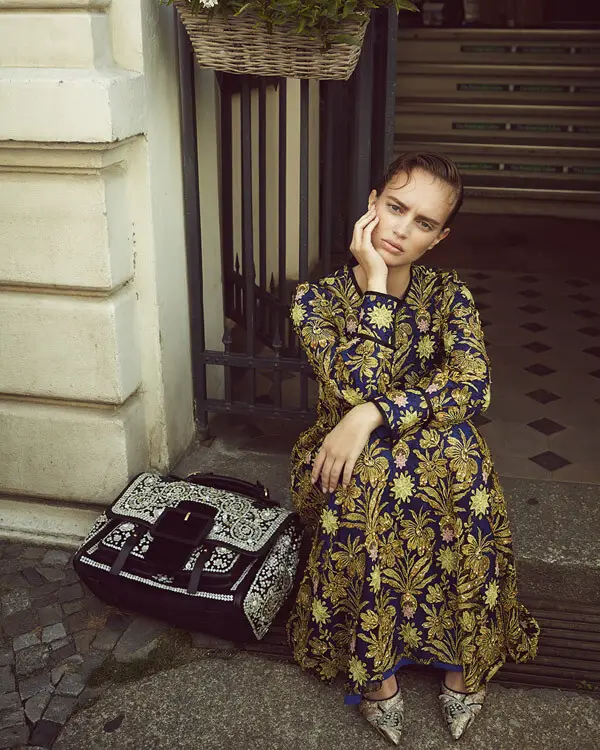 By Heidi Rondak
By Heidi Rondak
If you have a certain vision of how your model should pose, but your description fails to bring her/him into the position, the best thing you can do is just showing it to her/him. Put the camera aside and slip into the role of the model yourself. It’s easier for her/him to imitate you than the images in your moodboard, because she/he can see it in the exact setting. Besides, you take the pressure off her/him by breaking the invisible wall between photographer and model.
If you’re missing that certain presence in the model’s eyes, or she/he’s blinking always in the wrong moment, there’s a trick to catch her/him with big awake eyes. Just tell her/him to close her/his eyes and only open them when you tell her/him to. Make yourself ready to press the button, focus and then tell the model to open the eyes quickly. That’s your moment to shoot the picture. You’ll get wide open pupils and a much more ensouled image. Additionally, this trick is unusual and brings a model back to life, because it makes her/him curious about the photographer and his special methods.
Another trick, which is especially good for non-professional models and in case you are particularly making portraits, is to instruct her/him to push the chin forward und down a little bit. You should know that this usually feels strange to her or him. Convince her/him that it will look good on the photo, because the edge of the face will be more distinct. Other methods that models use for the same purpose, are pushing the tongue to the roof of the mouth or pressing the teeth together. I’ve seen models doing it and it worked well, though I can’t confirm it to be a universal warrant for better portraits. I think it depends on what the person in front of the lens finds easiest to do without being too distracted by it and you can try all three things to find out which one works best for your model.
Another trick, if your model seems to be a little insecure, is showing her the images in between. Some photographers never show the pictures to the model, but I think it can help a lot. She or he might just have been doubting her/his own appearance or pose, maybe because something’s very new to her/him this time. But when she/he sees the result, it’s much easier to imagine the outcome of what she/he’s doing. Simply showing a few pictures can sometimes cause a an energy boost, so the good pictures become even better (guess where you can see it? Of course in the eyes!)
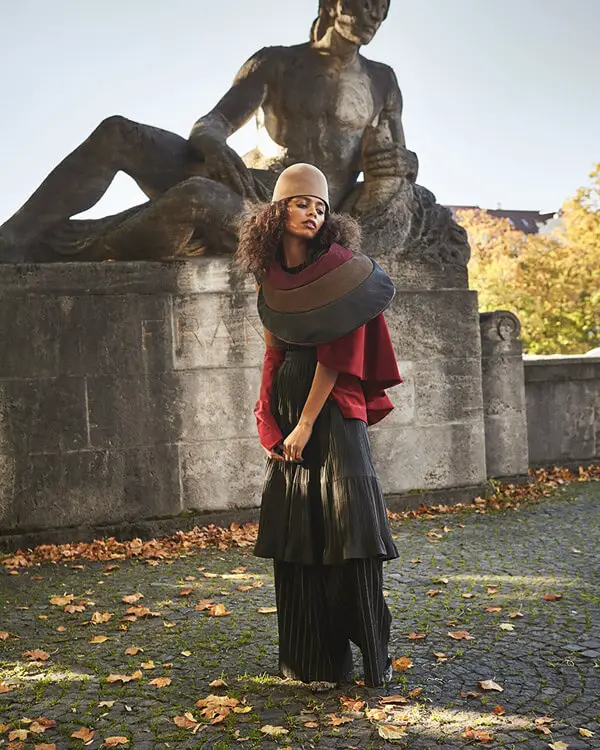 By Heidi Rondak
By Heidi Rondak
The last trick that I’d like to share with you is perfect when you are already on the safe side, but you’d like to tease out a little bit more of the model just to see what happens. So there’s already a good variety of pictures and the model and team feel that it won’t be long until you say that it’s a wrap. That’s the perfect moment to tell the model that you’re going to take another 5 or 10 images before you change the outfits or you’re completely done. Maybe you had a favorite pose before and you’d like to repeat it – then just tell her/him about it. But you might just be curious to see how she/he’s going to finish the scene. Either way, it’s your job again to make the model feel like she/he wants to give another 110% for those last images. Of course you can take more than 5–10 images, but yet you should keep it short and intense by giving great feedback or speeding up. Even though in my case the very first images taken are usually the best ones, those powerful last moments of a session can bring up great results too.
Last but not least I’d like to say that every photo shooting is different from the other, just like every model and photographer. Some of my tips and tricks might work better for one, and some for the others. It always depends on the people involved and everyone’s experiences. I think that the most important thing is to always be friendly and authentic, so the whole team on set can feel comfortable and give her or his best.
I’m wishing everyone great fashion/people shootings.
For more on model photography, take a look at this article.
Photo captions/team credits:
Title. „Jasmine“ by Heidi Rondak, model Stella Klein (M4 Models), styling Veronique Helmschrott, styling assistant Radvile Kunisauskaite, hair & make-up Anne-Marie Wittchen | henna art Linda Mey
01. „Ochrasy“ by Heidi Rondak, model Alexander Weber (Iconic Management), grooming Rebecca Schmitz, styling Celso Da Costa Hamelink
02. „Supermassive Black Hole“ by Heidi Rondak, model Verena (PARS Management), styling Neesha Meusch, hair & make-up Nadine Hermann
03. „Dreams of a Samurai“ by Heidi Rondak, model Emma Reipert (M4 Models), styling Konstantinos Gkoumpetis, hair & make-up Rocco Kowalski
04. „The Saboteur“ by Heidi Rondak, model Alexandra Armina (IMM Europe), styling Matthias Heger, hair & make-up Marielena Krewer
05. „Moi, Lolita“ by Heidi Rondak, model Krista Tcherneva (ICONIC Management), styling Konstantinos Gkoumpetis, hair & make-up Sven Ohlsen
06. „Vagabond“ by Heidi Rondak, model Joyce Almeida (Munich Models), styling Samir Abou-Suede, hair & make-up Nadine Hermann









1 comment